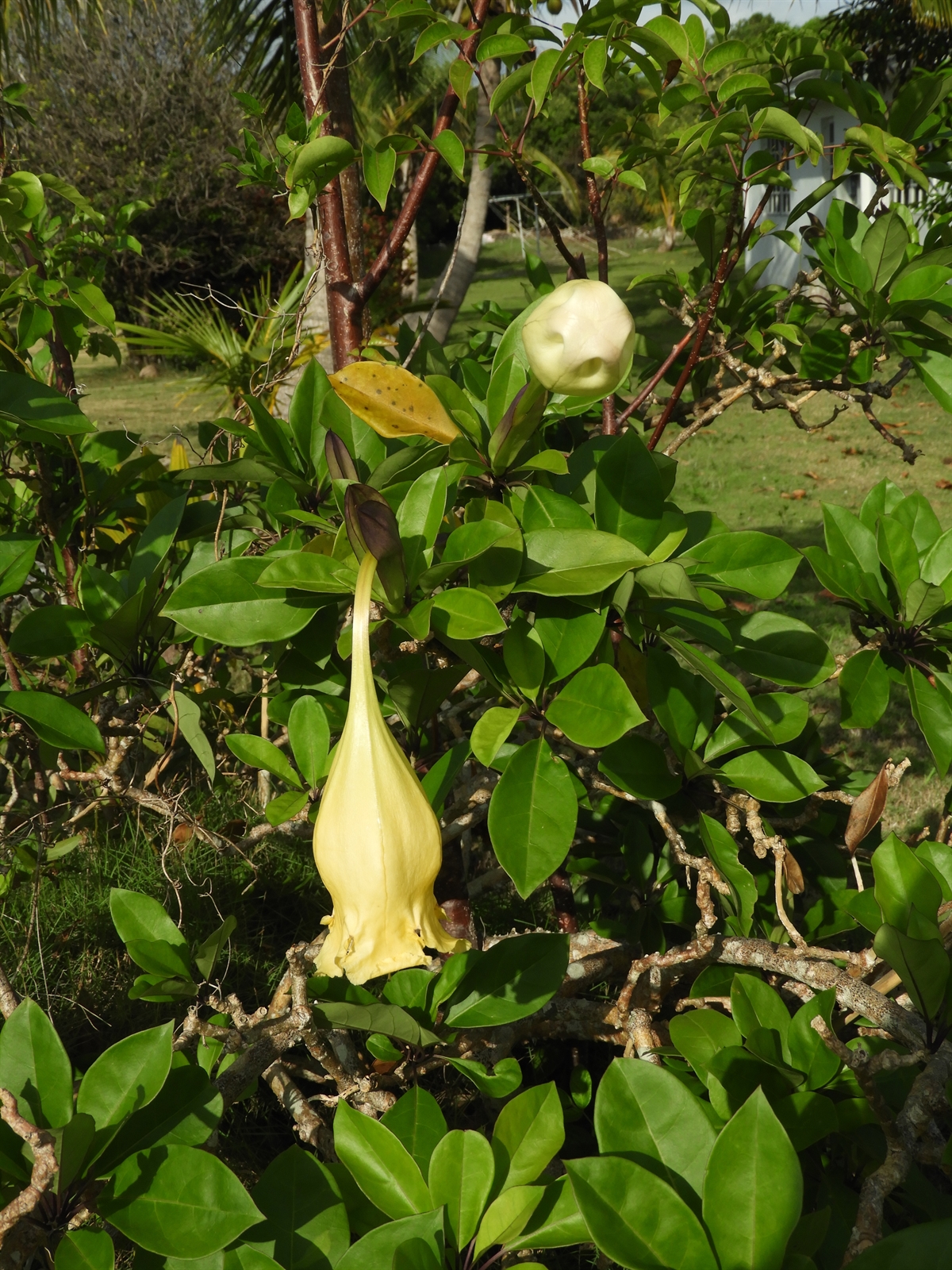Habit: Solandra maxima grows as a vine/liana to 15 m in length. The simple leaves are arranged alternately, to 16 cm in length, elliptic with an acuminate leaf apex and an entire leaf margin.
The large, complete, perfect, actinomorphic flowers are terminal, solitary or in few flowered clusters. The calyx has 5, fused into a tube, greenish sepals. The corolla has 5, fused, yellow petals with reflexed lobes and 5 – 10 purple/red striations interiorly. There are 5 stamens with yellow anthers. The ovary is half inferior with 4 locules and numerous seeds. The fruit is an ovoid berry at maturity.
Habitat: Solandra maxima grows in Human Altered environments (yards and gardens).
Distribution: Solandra maxima is NOT native to the Lucayan Archipelago has been observed on North Andros, New Providence and Eleuthera. It is native to Mexico, Central America and Columbia but now grows in North America and parts of Europe.
Medicinal/Cultural/Economic usage: Solandra maxima is not known to be used medicinally in the Lucayan Archipelago.
It is grown as a trellis plant for its large showy flowers.
Solandra maxima is EXTREMELY TOXIC. Care should be taken when handling the plant and no portion of the plant should ever be ingested.


